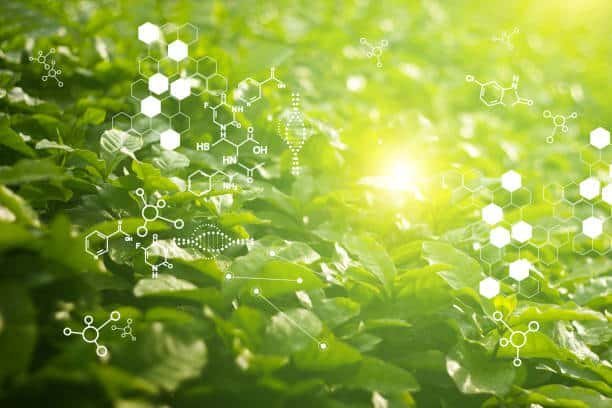Green Chemistry: What You Need To Know About Sustainable Manufacturing
Green chemistry has emerged as a promising solution for sustainable manufacturing. It is an innovative approach to the design and development of chemical products and processes that reduces or eliminates the production of hazardous substances. By utilizing green chemistry principles, companies can reduce their environmental impact while also improving their bottom line
The world is facing an ever-increasing demand for products and services that requires the use of chemicals. Chemical manufacturing processes are essential in various industries, from pharmaceuticals to textiles, from electronics to construction. However, the use of hazardous substances, the generation of waste, and the depletion of natural resources have put a strain on the environment, and society is looking for ways to mitigate these impacts.
This is where green chemistry comes in. Green chemistry is an innovative approach to chemical manufacturing that aims to design and develop chemical processes that are safe, sustainable, and efficient. Green chemistry principles seek to minimize waste, conserve energy and water, and avoid the use of hazardous materials, while still producing high-quality products.
The concept of green chemistry has been around for several decades, but it has gained more traction in recent years due to the growing concern over climate change and the need for sustainable practices. Many companies and organizations are adopting green chemistry principles, and governments are encouraging the development of sustainable practices through policies and regulations.
In this article, we’ll delve deeper into what green chemistry is, how it works, and why it’s essential for the future of sustainable manufacturing. We’ll also discuss the benefits of green chemistry and provide examples of how it’s being implemented today. By the end of this article, you’ll have a better understanding of green chemistry and its role in creating a more sustainable future.

What is Green Chemistry?
Green chemistry is a holistic approach to chemical manufacturing that considers not only the final product but also the entire lifecycle of the product, from its raw materials to its disposal. It seeks to minimize the use of non-renewable resources and hazardous materials and aims to develop processes that are safe, cost-effective, and environmentally sustainable.
One of the fundamental principles of green chemistry is the prevention of pollution at the source. This means designing chemical processes that produce minimal waste and emissions. The emphasis is on reducing waste rather than simply treating it after it’s generated. This is achieved by using less toxic reagents, maximizing the efficiency of reactions, and designing processes that are inherently less wasteful.
Another key principle of green chemistry is the use of renewable resources. Traditional chemical processes often rely on non-renewable resources, such as petroleum-based feedstocks. Green chemistry aims to reduce our reliance on these resources and instead use renewable feedstocks, such as plant-based materials, that can be sustainably produced.
Green chemistry also emphasizes the importance of designing chemicals that are safe for human health and the environment. Chemicals that are toxic or persistent can have severe and long-lasting effects on human health and the environment. Green chemistry seeks to design chemicals that are less toxic, have minimal environmental impact, and are easier to dispose of safely.
Overall, green chemistry is a proactive approach to chemical manufacturing that aims to prevent pollution, conserve resources, and promote sustainability. By designing chemical processes that are safe, efficient, and environmentally sustainable, we can create products that benefit society without harming the environment.
How Does Green Chemistry Work?
Green chemistry works by incorporating the principles of sustainability into the design of chemical processes. These principles include minimizing waste, using renewable resources, reducing energy consumption, and avoiding the use of hazardous materials. The goal is to create chemical processes that are safe, cost-effective, and environmentally friendly.
To achieve these goals, green chemistry uses a variety of strategies and techniques. One strategy is to use alternative feedstocks. For example, rather than relying on petrochemicals as a primary feedstock, green chemistry seeks to use renewable resources such as biomass or waste products that can be converted into useful chemicals. This approach not only conserves non-renewable resources but also reduces greenhouse gas emissions.
Another strategy is to optimize reaction conditions. Green chemistry seeks to minimize the use of solvents, catalysts, and other chemicals that can be harmful to human health and the environment. It also aims to reduce the amount of energy required to carry out chemical reactions. For example, some green chemistry processes use ultrasound or microwaves to reduce the energy required for reactions.
Green chemistry also encourages the use of biodegradable and non-toxic materials. The use of biodegradable materials reduces the amount of waste generated and the environmental impact of the process. Non-toxic materials reduce the risk of exposure to hazardous substances, improving worker safety and reducing environmental pollution.
Furthermore, green chemistry emphasizes the importance of designing processes that are inherently safer. This involves reducing the risk of accidents and spills and minimizing the potential for releases to the environment. For example, using closed-loop systems can reduce the risk of spills, and incorporating safety features such as pressure relief valves can reduce the risk of accidents.
Overall, green chemistry works by incorporating sustainable design principles into chemical manufacturing processes. By minimizing waste, using renewable resources, reducing energy consumption, and avoiding the use of hazardous materials, green chemistry can create chemical processes that are safe, cost-effective, and environmentally friendly.
Why is Green Chemistry Essential for Sustainable Manufacturing?
Green chemistry is essential for sustainable manufacturing because it helps reduce the environmental impact of chemical manufacturing processes. By using sustainable practices, manufacturers can reduce waste, conserve energy and water, and minimize the use of hazardous materials. This not only benefits the environment but also reduces costs and improves product quality.
In addition, green chemistry can help companies comply with environmental regulations and meet consumer demand for sustainable products. Many consumers today are concerned about the environmental impact of the products they buy and are more likely to choose products that are produced using sustainable practices. Companies that implement green chemistry practices can differentiate themselves from competitors and gain a competitive advantage in the market.
Green chemistry can also help reduce the negative impact of chemical manufacturing on human health. Chemicals that are toxic or persistent can have severe and long-lasting effects on human health, leading to illnesses and even death. Green chemistry aims to design chemicals and processes that are safer for workers and consumers, reducing the risk of exposure to harmful substances.
Moreover, green chemistry can help create new business opportunities and spur innovation. By finding new ways to use renewable resources and reduce waste, manufacturers can create new products and processes that are more sustainable and cost-effective. This can help companies stay ahead of the curve and adapt to changing market conditions.
Essentially, green chemistry is essential for sustainable manufacturing because it helps reduce the environmental impact of chemical manufacturing processes, complies with environmental regulations, meets consumer demand for sustainable products, reduces negative health impacts, and creates new business opportunities. By embracing green chemistry, manufacturers can create a more sustainable future for themselves, their communities, and the planet.
Benefits of Green Chemistry
Green chemistry offers numerous benefits for both the environment and the economy. Some of these benefits include:
- Reduced environmental impact: Green chemistry reduces the environmental impact of chemical manufacturing processes by minimizing waste, reducing energy consumption, and using renewable resources.
- Improved product quality: Green chemistry can improve the quality of products by reducing impurities and increasing the purity of the final product.
- Cost savings: Green chemistry can reduce costs by minimizing waste and using renewable resources, which can help manufacturers become more efficient and profitable.
- Enhanced public health: Green chemistry can improve public health by reducing exposure to hazardous materials and reducing pollution.
Examples of Green Chemistry
There are several examples of green chemistry in action today. Some of these examples include: Biodegradable plastics: Plastics made from renewable resources that can break down naturally.
Biofuels: Fuels made from renewable resources like corn and sugarcane.
Green solvents: Solvents that are safe, non-toxic, and biodegradable.
Renewable chemicals: Chemicals made from renewable resources like corn, soy, and sugar.
The adoption of green chemistry principles is gaining momentum across many industries, as more companies strive to reduce their environmental impact and improve sustainability. One industry where green chemistry is making significant strides is the plastics industry. Many companies are now producing biodegradable plastics from renewable resources, such as cornstarch and cellulose, to reduce the amount of plastic waste that ends up in landfills and oceans.
For example, the company BioBag produces compostable bags and films made from renewable resources such as corn and vegetable starch. These products break down naturally and do not contribute to the buildup of plastic waste in the environment.
Another example is the use of biofuels in the transportation industry. Companies like United Airlines are now using biofuels made from renewable resources such as sugarcane and corn. These fuels emit fewer greenhouse gases than traditional fossil fuels, reducing the carbon footprint of the airline industry.
Green solvents are another example of green chemistry in action. Solvents are used in many industries, including pharmaceuticals and electronics manufacturing. Companies are now using green solvents, which are non-toxic, biodegradable, and safer for workers and the environment. For example, the pharmaceutical company Pfizer has developed a green solvent that reduces waste and environmental impact while also improving the efficiency of their manufacturing processes.
Finally, the use of renewable chemicals is becoming more prevalent across industries. Companies are using renewable resources such as soy, corn, and sugar to produce chemicals used in a wide range of products, including cosmetics, cleaning products, and packaging materials. For example, the company Elevance Renewable Sciences produces renewable chemicals from natural oils, reducing the environmental impact of chemical manufacturing processes.
The adoption of green chemistry principles is leading to the development of innovative products and processes across many industries. From biodegradable plastics to renewable chemicals, companies are finding ways to reduce waste, conserve resources, and create a more sustainable future for us all.
Conclusion
Green chemistry is the future of sustainable manufacturing. By reducing the environmental impact of chemical manufacturing processes, we can create a more sustainable and prosperous future. With its numerous benefits and increasing adoption, it’s clear that green chemistry is here to stay. If you’re interested in learning more about green chemistry, there are plenty of resources available online.
Here are some reputable organizations and their websites relating to green chemistry:
- American Chemical Society’s Green Chemistry Institute: https://www.acs.org/content/acs/en/greenchemistry.html
- Environmental Protection Agency’s Green Chemistry Program: https://www.epa.gov/greenchemistry
- Green Chemistry and Commerce Council: https://www.greenchemistryandcommerce.org/
- The Green Chemistry Initiative at the University of Toronto: https://www.greenchemistryinitiative.org/
- Beyond Benign: https://www.beyondbenign.org/
- The Center for Green Chemistry and Green Engineering at Yale: https://greenchemistry.yale.edu/
- The Berkeley Center for Green Chemistry: https://bcgc.berkeley.edu/
- The European Chemicals Agency’s Green Chemistry website: https://echa.europa.eu/green-chemistry
These organizations are dedicated to promoting and advancing green chemistry principles and practices, and their websites contain valuable information and resources relating to green chemistry.


